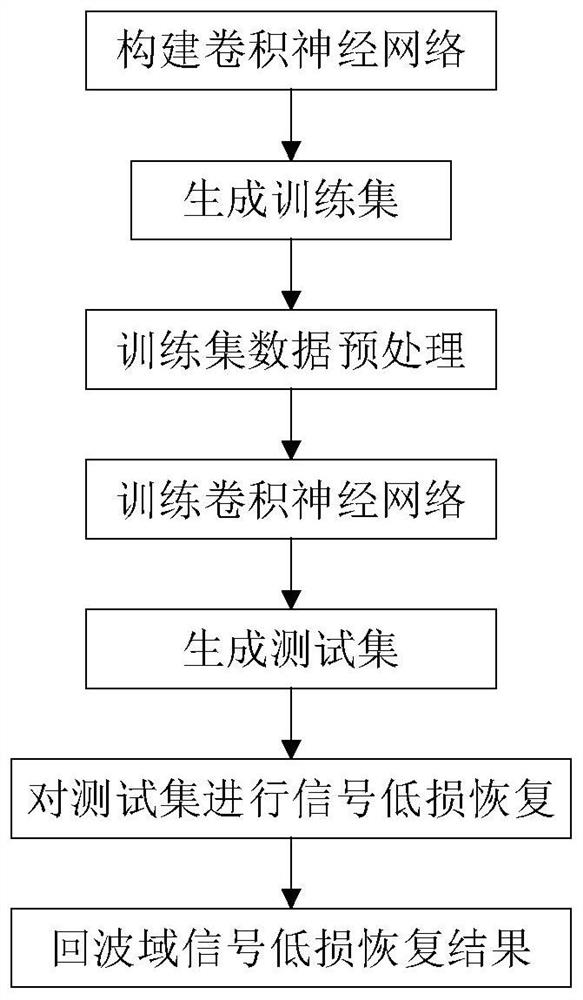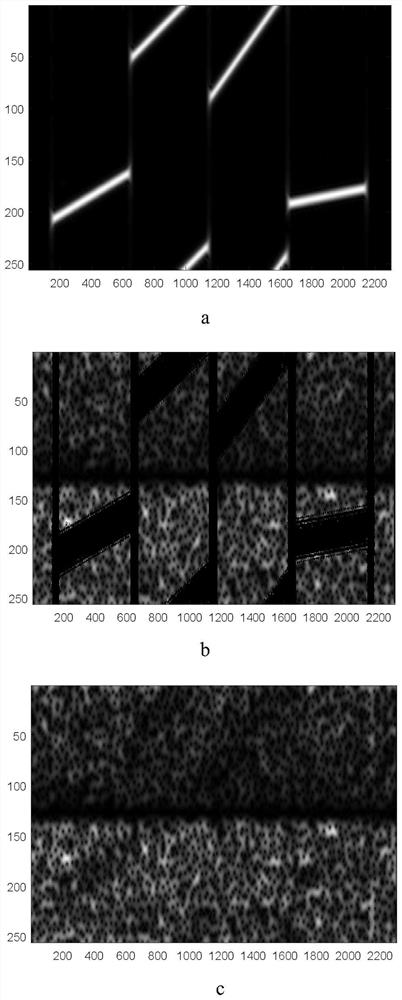Radar signal anti-interference low-loss recovery method of coding and decoding convolutional neural network
A convolutional neural network and radar signal technology, applied in the field of radar signal processing, can solve the problems of inability to meet the needs of radar imaging detection and identification, target information loss, radar echo defect, etc., to improve the detection effect and compensate for the loss of target information , the effect of improving the robustness
- Summary
- Abstract
- Description
- Claims
- Application Information
AI Technical Summary
Problems solved by technology
Method used
Image
Examples
Embodiment Construction
[0034] The embodiments and effects of the present invention will be described in further detail below with reference to the accompanying drawings.
[0035] refer to figure 1 , the implementation steps of this example are as follows.
[0036] Step 1: Build a low-loss repair network for time-frequency signals.
[0037] refer to figure 2 , the time-frequency signal low-loss repair network constructed in this example is composed of 14 convolutional layers, 7 upsampling layers and 7 splicing layers. The structural relationship is as follows:
[0038] Input → 1st convolutional layer → 2nd convolutional layer → 3rd convolutional layer → 4th convolutional layer → 5th convolutional layer → 6th convolutional layer → 7th convolutional layer → 1st nearest neighbor upsampling Layer → 1st stitching layer → 8th convolutional layer → 2nd nearest neighbor upsampling layer → 2nd stitching layer → 9th convolutional layer → 3rd nearest neighbor upsampling layer → 3rd stitching layer → 10th co...
PUM
 Login to View More
Login to View More Abstract
Description
Claims
Application Information
 Login to View More
Login to View More - R&D
- Intellectual Property
- Life Sciences
- Materials
- Tech Scout
- Unparalleled Data Quality
- Higher Quality Content
- 60% Fewer Hallucinations
Browse by: Latest US Patents, China's latest patents, Technical Efficacy Thesaurus, Application Domain, Technology Topic, Popular Technical Reports.
© 2025 PatSnap. All rights reserved.Legal|Privacy policy|Modern Slavery Act Transparency Statement|Sitemap|About US| Contact US: help@patsnap.com



